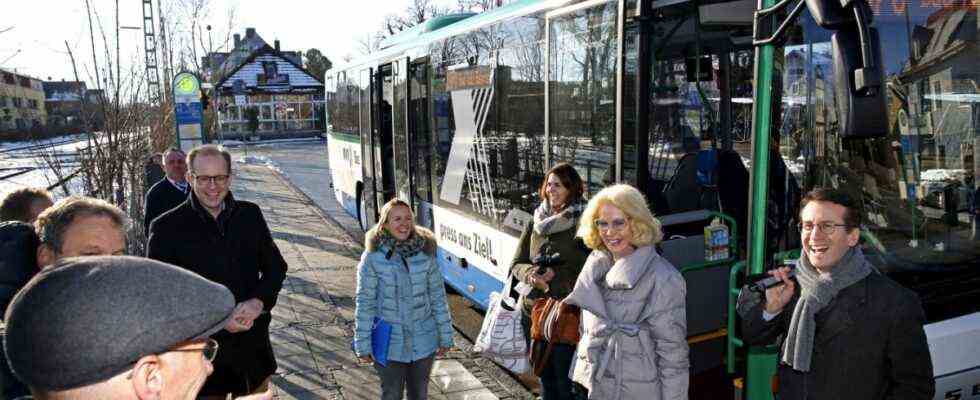There are quite a few things in the Fünfseenland that can be ascribed the title “regionally significant”. The Andechs monastery, for example, in whose monastery brewery a beer is produced that is popular throughout Bavaria. And of course the many lakes that not only attract visitors to the region from the Munich area. Now the district still has something important for the country, at least if the PR department of the Bavarian state government is to be believed: With the expansion of the X900 bus line and the introduction of the new X970 express bus, there are now two connections in the district that are part of the express bus targeted by the Free State -Rings around Munich are.
With a total of seven lines, the districts of Munich, Bad Tölz-Wolfratshausen, Dachau, Fürstenfeldbruck and Starnberg are to be better connected and detours via Munich city center with the S-Bahn lines are no longer necessary. And because it is obviously important for the responsible ministry to underline the urgency of this infrastructure project, the PR strategists have simply given the new connections the name “State-significant bus routes”.
The district of Starnberg at least benefits enormously from the project. The X900 – so far the only existing connection on the express bus ring – runs as before from Starnberg train station with intermediate stations including in Gilching-Argelsried and Fürstenfeldbruck train station to the Buchenau S-Bahn station. In addition, at the Viscardi-Gymnasium stop in Fürstenfeldbruck there is now a good option to change to the X800 express bus. The X900 also connects the Starnberg grammar school with the Viscardi grammar school in Fürstenfeldbruck and the local vocational and technical college. In Gilching-Argelsried, the X900 will take over the route previously served by the X920 and will in future connect to the Gilching-Argelsried Süd industrial site. In Starnberg, the “Klinikum-MediCenter” stop will be served by the X900 instead of “Egerer Straße”. For the timetable change on Sunday, the frequency has now been significantly increased again. The X900 now runs from Monday to Saturday from 5 a.m. to 10 p.m. continuously every 20 minutes, on Sundays and public holidays from 7 a.m. to 10 p.m. every hour. The same applies to the newly introduced X970 line, which on its route via Wolfratshausen and Geretsried connects Starnberg See station with Bad Tölz in an hour and a quarter. With this cross-connection you can now get from Starnberg in the direction of the Oberland without having to change trains. From Geretsried and Bad Tölz, in turn, the new connection will in future take you to the north-east bank of Lake Starnberg without having to change, and in Wolfratshausen you can change from and to the new MVV express bus line X320 in the direction of Oberhaching.
Overall, the express bus ring is intended to create “a fast and direct public transport service between a total of five districts,” explains the managing director of the Munich Transport Association (MVV), Bernd Rosenbusch. District Administrator Stefan Frey (CSU) is also enthusiastic about the new bus routes. “With this we are once again enormously improving our range of public transport and can offer even more attractive services in the region and the surrounding area,” he says. “That can really be seen.” And also for the responsible transport minister Kerstin Schreyer (CSU) the new connections in the Munich area are “a real added value in the traffic mix around Munich”. That is why the Ministry of Transport is supporting the new bus project and taking on more than 50 percent of the operating cost deficits – Schreyer left it open in her communication about the sums involved. The remaining part of the costs will be borne by the five districts that benefit from the new bus routes – including the district of Starnberg. The district office was initially unable to say what costs are expected here in the region. But one thing is clear: The operation of public transport is generally not exactly cheap for the public sector. In 2019, the district compensated for the operating cost deficit with four million euros, with the municipalities adding another 2.5 million euros.
For the seven lines in five districts, the MVV wants to purchase around 50 modern buses, all of which have WiFi and USB connections. And with that, the state government is also getting closer to the next political issue on a nationally significant scale – because the expansion of digitization is also urgently on the agenda.

